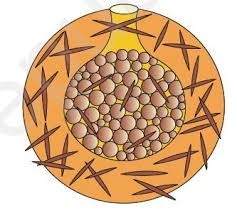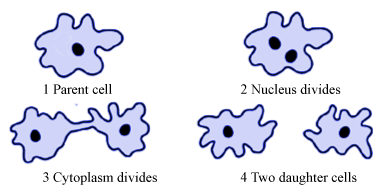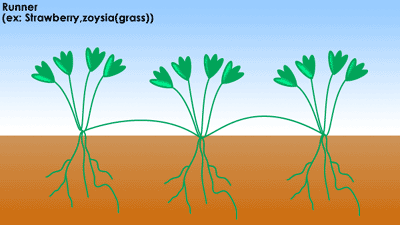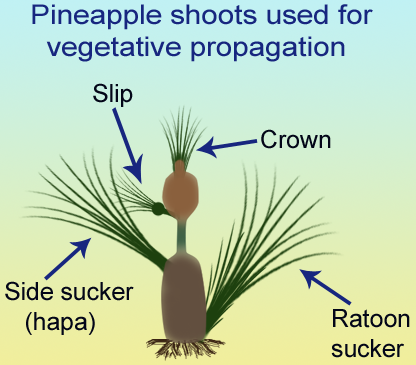Reproduction in Organisms
Table of content |
|
|
Introduction to Reproduction in Organisms
The time of birth to common death of a living being is called Life Traverse. No individual is everlasting with the exception of unicellular living being on account of it proceeds with its life traverse in descendants by fission. The coherence of life on earth is accomplished by the procedure of reproduction. The accompanying table demonstrates the life ranges of a couple of living creatures.
Organism |
Life Span |
Organism |
Life Span |
|
Some microorganisms |
few minutes to few hours |
Cat |
35- 40 years |
|
May Fly |
1 day |
Whale |
37 years |
|
Cicada |
1 day |
Horse |
50 years |
|
Butterfly |
1- 2 weeks |
Crocodile |
60 years |
|
Fruit fly |
1 month |
Elephant |
60- 75 years |
|
Rice Plant |
4 months |
Eagle |
90 years |
|
Wheat Plant |
5 months |
Man |
100 years |
|
Rat |
4 years |
Parrot |
140 years |
|
Rose Bush |
10 years |
Tortoise |
100- 150 years |
|
Rabbit |
13 years |
Banyan Tree |
200- 300 years |
|
Crow |
15 years |
Peepal |
2000- 3000 years |
|
Cow |
25 years |
Sequoia |
3000- 4000 years |
|
Banana Tree |
25 years |
(Red Wood Tree) |
|
|
Monkey |
26 years |
11,300 years |
|
|
Dog |
25 years |
oldest plant found |
|
|
in S.W. California, U.S. |
Table: Life Spans of some living beings
What is Reproduction?
Reproduction (otherwise called procreation, multiplication or raising) is the regular methodology by which new individual life frames – "Offspring or Posterity" – are made from their "Parents". Reproduction is a focal component of all alluded to life; each respective life shape exists as the result of reproduction. Two known Sorts of Reproduction are:
-
Sexual Reproduction: It is the reproduction in which two guardians of inverse sex get involved with the development and combination of gametes.
-
Asexual Reproduction: It is the type of reproduction which involves single parent without the development of gametes.
Asexual Reproduction
The posterity created by asexual reproduction is their parent's precise copy. They are hereditarily indistinguishable. Consequently, they are named as Clones. Asexual reproduction is normal in unicellular living being. In plants and in creatures having basic level of organization this type of reproduction can be seen.
-
Binary Fission: The single cell living being of kingdom Protista and Kingdom Monera divide and reproduce by straightforward cell division called Binary Fission. The cell partitions into two half. Every half creates into new a grown-up.
Binary fission
-
Zoospores: Zoospores are motile asexual spores of green growth, parasites etc. They utilize flagellum for movement and velocity.
Zoospores
-
Bud: Cell division in yeast is unequal and little buds are delivered. At first these are appended to parent cell which later becomes independent and forms into new organisms. In hydra little outgrowth shapes bud.
Budding in yeast
-
Conidia: In fungi these are the asexual spores produced by mitosis. For Example: Penicillium. In phylum Ascomycota (sac growths) the conidia creates on an extraordinary stalk conidiophores.
Conidia in fungi
-
Gemmules: These are the inside buds of fresh water sponges. They oppose drought, high temperature, freezing, absence of oxygen and so on.
 |
 |
Vegetative Reproduction
Asexual reproduction in plants is named as Vegetative Reproduction. It actually happens by:
-
Runner: It is soft and thin stem that becomes on a level plane to ground. Actually it cuts off and the isolated stem develops into plant. For Example: Includes Strawberry.
-
Rhizome: It is the modified underground stem. On the off chance that a rhizome is isolated into pieces, every piece might have the capacity to offer ascent to another plant. For Example: Canna, Ginger.
-
Suckers: It is an adventitious shoot, basal shoot, root growth. It develops from a bud at the base of a tree or bush or from its roots. For Example: Includes Cherry, Apple.
-
Tuber: Tubers are adapted plant structures that are augmented to store supplements. These are thick and short underground stem. It bears a bud with minute scale leaves. It has the capacity for forming into another plant. For Example: Includes Potato.
Tuber
-
Offset: Offset is a tiny, essentially entire daughter plant that is asexually created on the mother plant. Illustration includes water hyacinth.
-
Bulb: A bulb is a short stem plant with leaf bases or fleshy leaves. Illustration includes Onion, Garlic etc.
-
Terror of Bengal: "Water Hyacinth" (Eichhornia) is a water plant and is frequently called Terror of Bengal. It was initially presented in India due to delightful flowers and state of leaf. It quickly imitated by vegetative technique counterbalance in brief period. It channels Oxygen from water that prompts to death of fishes. Henceforth it is considered as a water weed.
Terror of Bengal
Sexual Reproduction
It includes the arrangement of male and female gametes in same individual (bisexual) or distinctive individual (unisexual) of inverse sex. All living beings achieve the phase of development and maturity before they repeat sexually.
Juvenile Phase: In creatures, the time of development to achieve development is called Juvenile Stage. In plants this is termed as vegetative stage. In angiosperms end of vegetative stage finishes when they begin to flower.
Senescent Phase: The end of regenerative stage is called Senescent Stage or Maturity. After this stage the individual dies.
Flowering in Plants: In yearly and half-yearly plants, floweringoccurs only once or twice a year. In these plants vegetative, reproduction and senescent stage are unmistakably distinguished. Case: Rice, Wheat, marigold and so on. In a few plants blooming happens a few times in a specific season. In a few plants blossoming happens just once in a life time. After that plants dies.
For Instance, Bamboo blossoms following 50 to 100 years. Kuranji (Strobilanthus kunthiana) blooms once in 12 years.
Neelakurinji (Strobilanthes kunthiana) is a shrub that is found in the Shola forests
Reproductive Cycles in Animals
Reproduction in creatures is regular. Fowls lay eggs just in particular season. The placental creatures display conceptive cycle that prompts to the specific changes in ovaries and hormones level.
Oestrus Cycle: It is the conceptive cycle of non primate creatures like rats, cows, tigers, dogs and so forth. These creatures are reproductively dynamic just in particular season. Consequently, these are termed Seasonal Breeders.
Menstrual Cycle: It is the conceptive cycle of primates like humans, apes and monkeys. These primates are dynamic reproductively throughout their reproductive phase. Consequently, these are termed Continues Breeders.
Events in Sexual Reproduction
-
Pre- Fertilization Event: involves gamete transfer and Gametogenesis.
-
Post- Fertilization Event: includes the arrangement of zygote and Embryogenesis.
-
Gametogenesis: It is the procedure of development of female and male haploid gametes.
Homogametes or Isogametes: These are morphologically comparative female and male gametes.
Heterogametes: These are morphologically unique female and male gametes.
-
Anthrozoid or Sperm is themale gamete
-
Egg or Ovum is the female gamete
Name of Organism |
Chromosome Number in Meiocyte (2n) |
Chromosome Number in Gamete (n) |
|
Human Beings |
46 |
23 |
|
Housefly |
12 |
6 |
|
Rat |
42 |
21 |
|
Dog |
78 |
39 |
|
Cat |
38 |
19 |
|
Fruit fly |
8 |
4 |
|
Ophioglossum (a fern) |
1260 |
630 |
|
Apple |
34 |
17 |
|
Rice |
24 |
12 |
|
Maize |
20 |
10 |
|
Potato |
24 |
|
|
Butterfly |
380 |
190 |
|
Onion |
32 |
16 |
Table 1: Chromosome numbers in meiocytes (diploid, 2n) and Gametes (haploid, n) of some organisms
Sexuality in Organisms
-
Homothallic or Monoecious: Denotes the bisexual condition in plants and fungi. In this both female and male conceptive structures are available in single organism.
-
Heterothelic or Dioecious: Denotes the unisexual condition in plants. In this male and female regenerative parts are present in separate flowers.
Example for Monoecious Plants Includes: Cucurbita.
Example for Diecious Plants Includes: Papaya, Date Palm.
Sexuality in Animals
-
Hermaphrodite or Bisexual Animals: Creatures having both male and female regenerative organs. Example of such animals are Tape Worm, Earth Worm, Sponges, Leach etc.
-
Unisexual Animals: Creatures having just male or female regenerative organ. Examples of such animals are Cockroach, Insects, Birds, Fishes, Amphibians and Mammals.
-
Haploid Organism: These are the individuals which have one and only arrangement of chromosomes in somatic cells. Examples include Algae, Fungi, Monera, bryophytes has haploid plant body.
-
Diploid Organism: These are the individuals which have two chromosomal sets in somatic cells. Examples include Angiosperms, Gymnosperms, Pteridophytes and most animals.
In Diploid Creatures the gametes are formed by meiosis. Towards the end of meiosis there is a formation of haploid gametes.
Transfer of Gametes
-
In most of the living beings male gametes are motile and female gametes are non-motile. In a few organisms such as fungi and green growth both female and male gametes are motile.
-
In green growth, pteridophytes and bryophytes male gametes travel in water to achieve female gamete.
-
The vast number of male gametes are not able to achieve female gamete. To repay this misfortune, male gametes are produces in thousand times as female gametes.
-
In bisexual self preparing plants pollen grains are effectively exchanged to stigma.
-
In unisexual and cross preparing or cross fertilizing plants fertilization happens by media like insects, air, birds and so on.
Diagram showing parts of a flower where pollination takes place
Fertilization or Syngamy
The procedure of combination of male and female gametes, that outcome in the arrangement of zygote is called Fertilization.
Parthenogenesis: It is the advancement of new individual without fertilization. For Example: Honey bee, Some Lizards, Turkey bird etc. The seed less fruits are parthenocarpic fruits.
Fertilization is of two types:
-
External Fertilization: In this combination of male and female gamete happens outside the body in water media. Cases incorporate water organisms such as Green Growth, Amphibians and Fishes. The impediments of outer fertilization incorporate
-
Living being produces extensive number of gametes.
-
The predators destroy off springs and eggs.
-
The survivality rate of posterity to grown-up is less.
-
Internal Fertilization: In this combination of male and female gamete happens inside the body of the female. Examples include Seed plants (Gymnosperms and Angiosperms), Terrestrial animals.
Zygote: The combination of haploid male and female gamete result in the formation of diploid zygote. In parasites and green algae, the zygote formed has thick cell wall. It serves to oppose the unfavorable condition.
-
In Haplontic (green growth like chlamydomonas, volvex, spirogyra) zygote partitions by meiosis to shape haploid spores. These spores mature into haploid sporophytes.
-
In Diplontic plant (Gymnosperms and angiosperms) zygote experiences mitosis to mature into diploid predominant sporophytes.
-
In Haplo- Diplontic (Bryophytes and Pteridophytes) zygote experiences mitosis to mature into diploid sporophytes.
Embryogenesis: It is the procedure of embryo development organism from zygote. The zygote experiences division and separation into embryo.
-
Oviparous (Egg Laying Animals): Oviparous animals are animals that lay eggs, with little or no other embryonic development within the mother. This is the reproductive method of most fish, amphibians, reptiles, all birds, and the monotremes.
-
Viviparous (Animals that gives birth to young one): Majority of well evolved creatures with the exception of prototheria (egg lying vertebrate) are viviparous. These are placental creatures. In these embryogenesis happens inside the female body. Due to legitimate embryo care and security the shot of survivality of young one are more in viviparous than oviparous.
Post Fertilization Changes in Flower
After zygote development, the stamen, sepals and petals of flower tumble off. In a few plants like tomato, brinjal sepals continue with fruit. The zygote forms into embryo. The ovule forms into seed. The ovary forms into fruit (pericarp).
Frequently Asked Questions (FAQs)
Q1. Why is reproduction essential for organisms?
Sol. Reproduction is vital to the life forms for progression of life on earth.
Q2. Which is a better mode of reproduction: sexual or asexual? Why?
Sol. Sexual reproduction is better on the grounds that the offspring of sexual reproduction fluctuates from parents. This serves to development and evolution.
Q3. Why is the offspring formed by asexual reproduction referred to as clone?
Sol. Since the off springs framed by asexual reproduction are hereditarily indistinguishable to their parents.
Q4. Offspring formed due to sexual reproduction have better chances of survival. Why? Is this statement always true?
Sol. In sexual reproduction, hereditary variety happens among the off springs, which may adjust better with the earth. Thus the statement is valid for most extreme.
Q5. How does the progeny formed from asexual reproduction differ from those formed by sexual reproduction?
Sol.
-
Progeny from asexual reproduction have comparable hereditary cosmetics and are precise of their parents, i.e., clone of the parent.
-
Variation is missing.
-
Progeny is less versatile to changes in environment.
-
Progeny from sexual reproduction have distinctive hereditary cosmetics and are not at all like the parent.
-
Variation happens in offspring.
-
Progeny is more versatile to changes in environment.
Q6. Distinguish between asexual and sexual reproduction. Why vegetative reproduction is also considered as a type of asexual reproduction?
Sol. Vegetative reproduction is considered as a sort of asexual reproduction in light of the fact that:
-
Single parent is included in reproduction.
-
There is no development of gametes.
-
Vegetative offspring forms are physical cells.
Q7. What is vegetative propagation? Give two suitable examples.
Sol. In plants, the asexual reproduction which is fit for delivering new off springs is called Vegetative Spread. Cases:
-
Runner or Stolon: in strawberry slim stem that becomes on a level plane to ground is called runner. Actually it cut off and isolated creates into new person.
-
Rhizome: In Ginger changed underground stem shapes rhizome. In the event that it isolated into pieces, every piece offers ascend to another plant.
-
Tuber: Potato tuber having buds when developed forms into another plant.
Q8. Define (i) Juvenile Phase, (ii) Reproductive Phase, (iii) Senescent Phase.
Sol.
(i) The time of development to accomplish maturity is called adolescent stage
(ii) Reproductive stage is the stage in life cycle, where living beings have all the limit to imitate sexually.
(iii) The end of conceptive stage in which a living being gradually loses the rate of digestion system, regenerative potential and dies.
Q9. Higher organisms have resorted to sexual reproduction in spite of its complexity. Why?
Sol. Higher life forms have depended on sexual reproduction:
-
To acquaint variation with empowering better versatile limit.
-
To reestablish energy and essentialness of the race.
-
To get appropriate parental care.
Q10. Explain why meiosis and gametogenesis are always interlinked?
Sol. Gametogenesis (arrangement of male and females gametes) is connected with diminishment in chromosome number. Subsequently gametogenesis is interlinked with meiosis in light of the fact that in meiosis, decrease of chromosome number from diploid set (2n) to haploid set (n) happens.
Q11. Identify each part in a flowering plant and write whether it is haploid(n) or diploid (2n).
Sol.
| a. | Ovary | Diploid |
| b. | Anther | Diploid |
| c. | Egg | Haploid |
| d. | Pollen | Haploid |
| e. | Male gamete | Haploid |
| f. | Zygote | Diploid |
Q12. Define External Fertilization. Mention its disadvantages.
Sol. The combination of gametes outside the body of a creature is called external fertilization, For Example: In frog. Disservices of external fertilization:
-
It requires a media (water) for combination of gametes.
-
Creature delivers extensive number of gametes.
-
The predators devastate eggs and off springs.
-
Less or no parental care is taken to young one.
-
The survivality rate of posterity to grown-up is less.
Q13. Differentiate between a Zoospore and a Zygote.
Sol. Zoospore:
(i) These are asexually created unicellular, bare and motile spores having maybe a couple flagella.
(ii) It might be haploid or diploid.
(iii) Zoospore partakes in dispersal.
Zygote:
(i) Zygote is diploid cell framed by combination of male and female gametes.
(ii) It is constantly diploid.
(iii) Zygote don't have critical part in dispersal.
Q14. Differentiate between Gametogenesis from Embryogenesis.
Sol. Gametogenesis
(i) The arrangement of gametes from meiocytes (gamete mother cell).
(ii) This is a pre-fertilization occasion.
(iii) The phone division amid gametogenesis is meiotic.
(iv) It produces haploid gamete.
Embryogenesis
(i) The arrangement of incipient organism from zygote cell.
(ii) This is a post-fertilization occasion.
(iii) The phone division amid embryogenesis is mitotic.
(iv) It offers ascend to diploid developing life.
Q15. Describe the post-fertilization changes in a flower.
Sol.
-
After zygote development, the sepals, petals and stamens of flower tumble off.
-
In a few plants like tomato, brinjal sepals persevere with fruit.
-
The zygote forms into embryo.
-
The ovule forms into seed.
-
The ovary develops and forms into fruit (pericarp).
Q16. What is a Bisexual Flower?
Sol. A flower which has both the male and female regenerative structures, i.e., both stamen and carpel is known as a bisexual flower.
Q17. Examine a few flowers of any cucurbit plant and try to identify the staminate and pistillate flowers. Do you know any other plant that bears unisexual flowers?
Sol. A staminate or male flower has just stamens and no carpel. A pistillate flower has just carpel and no stamens. Plants that bear unisexual flowers are papaya and date palm.
Q18. Why are offspring of oviparous animals at a greater risk as compared to offspring of viviparous animals?
Sol. In viviparous creatures, the youthful one creates inside the body of the female living being. As a consequence of this, the youthful one improves assurance and sustenance for appropriate advancement. In oviparous creatures, they lay egg and the youthful one creates outside the body of the female.
-
The predators crush eggs and off springs.
-
Less or no parental care is taken to youthful one.
-
The survivality rate of posterity to grown-up is less.
Watch this Video for more reference










